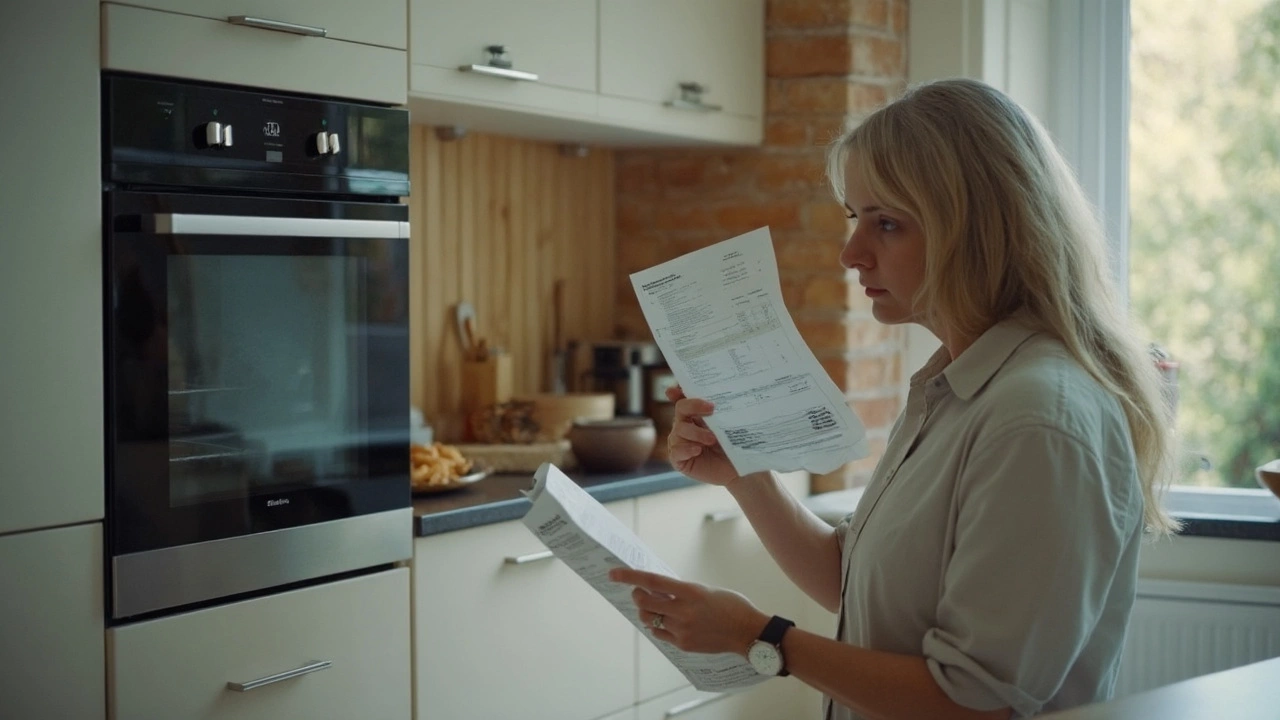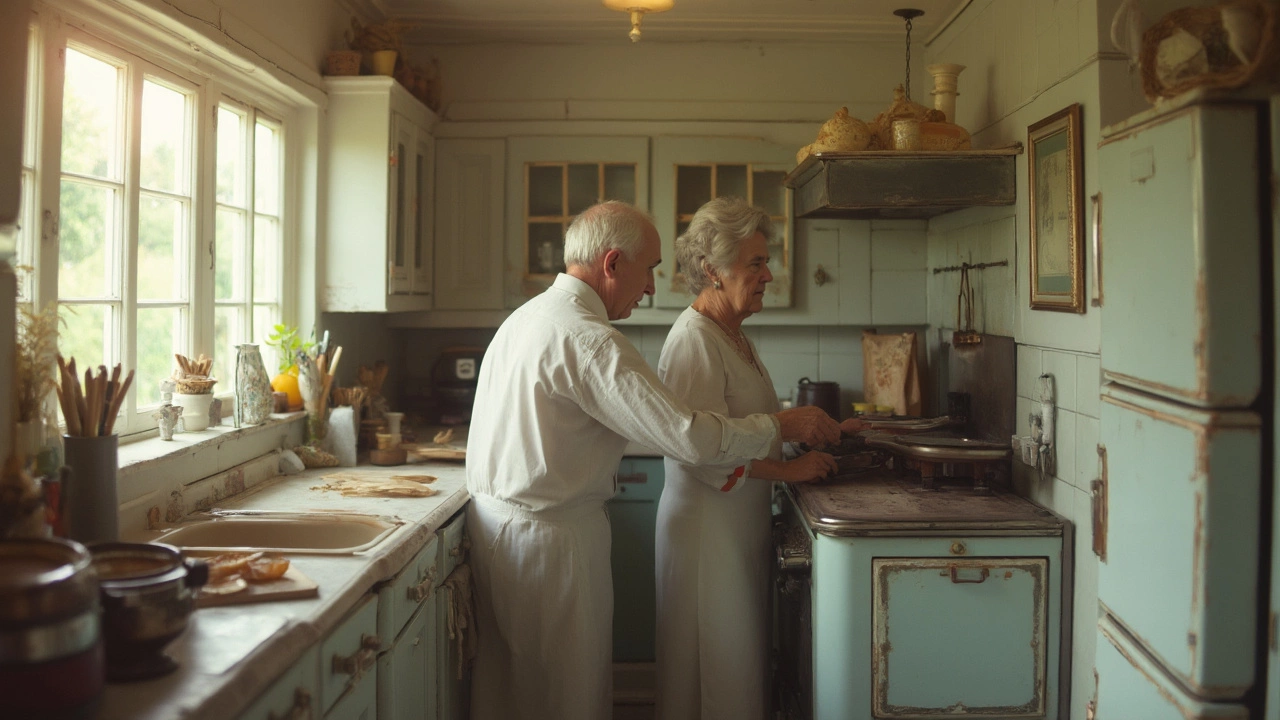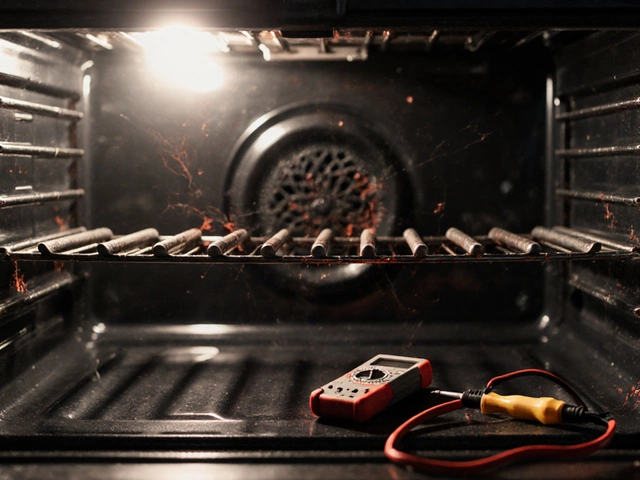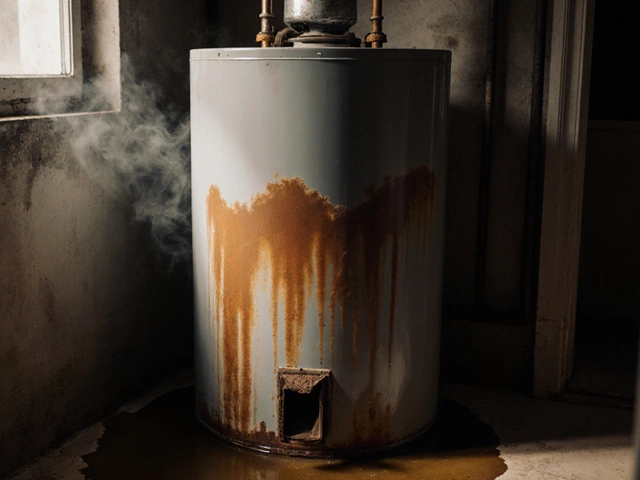Fifteen years. That’s older than most smartphones, laptops, and maybe even your coffee machine. So, if your electric oven is hitting that age, you’re probably wondering if hanging on a bit longer is smart or just asking for more headaches.
First off, age isn’t the whole story. Some ovens from back in the day run like old trucks—loud but dependable—while others develop nagging issues that never really go away. Have you started to notice slow preheating, strange noises, or uneven cooking? These aren’t just annoying—they could be hints your oven’s time is running out.
But here’s the thing: repairs aren’t always out of the question, even at 15 years. Costs and risks matter, but so does how much you like your current setup. Ever tried finding parts for a discontinued brand? Sometimes it takes more searching than it’s worth, and the repair bill can quickly rival a new appliance. If you’re looking to make a smart call, thinking about your oven’s brand, the type of repair, and your budget will steer you in the right direction.
- How Long Do Electric Ovens Really Last?
- Common Problems in 15 Year Old Ovens
- Can You Still Get Spare Parts?
- The Real Cost of Repairing an Old Oven
- When Repair Makes Sense—and When It Doesn’t
- Tips Before You Decide: Questions to Ask Yourself
How Long Do Electric Ovens Really Last?
If you’re trying to figure out whether that ancient oven is riding on borrowed time, here’s some real talk: most electric ovens stick around for about 13 to 17 years. Family use, the model, and regular cleaning all play a role, but hitting that 15-year mark means yours is on the older side for sure.
Here’s a quick breakdown:
| Brand | Average Lifespan (Years) |
|---|---|
| GE | 15 |
| Whirlpool | 13 |
| Frigidaire | 15 |
| Bosch | 14 |
| Samsung/LG | 13 |
If you barely use your oven, it might last longer. But heavy use—think daily roasting, baking, or broiling—can wear it out faster. Notice weird smells or the door not sealing tight? Those are classic signs it’s getting tired.
Here’s what really affects electric oven lifespans:
- Electric oven repair history — Constant repairs mean more trouble down the road.
- How you clean — Using harsh oven cleaners or skipping cleaning altogether shortens its life.
- Bad power surges — Old ovens usually don’t have great surge protection.
The bottom line: If your oven’s past 15 years and you’re seeing more problems, it’s living on borrowed time. Some will keep humming for a couple more years, but big repairs usually aren’t worth it after this point.
Common Problems in 15 Year Old Ovens
If your oven’s been around for a decade and a half, you’ve probably run into a few headaches. Some oven parts just don’t last forever. The heating elements, for example, get weaker after years of use. That shows up as slow preheating or uneven cooking—nobody wants half-baked cookies or burnt pizza edges.
Another common gripe? The thermostat can lose its mind. After 15 years, the oven’s temperature sensor may drift, so what you set isn’t what you actually get. Ever tried roasting chicken and ended up with dry meat, even though you swear you followed the recipe? Your thermostat could be the main culprit.
The control board is another part that often goes bad in old ovens. Modern ovens might flash error codes, or buttons stop working. Sometimes the oven just refuses to turn on, leaving you staring at a blank display. In cheaper models, a fried control board can mean the end of the road, since repairs can cost more than the oven’s worth.
Then you’ve got door issues. Hinges wear out, and seals crack. Without a tight seal, you lose heat, cook times get weird, and your energy bills might creep up. If you notice the oven light peeking through the closed door, or your kitchen heats up every time you bake, door problems could be the reason.
Let’s not forget the electrical side: wires and connectors can corrode or break—sometimes you’ll see sparks or smell burning plastic. Ignoring this is risky, since old wiring can be a real fire hazard. Even small things, like a busted oven light, tend to happen more in older electric ovens.
Here’s a quick look at the most common breakdowns:
- Heating element failure (slow or uneven heating)
- Thermostat or temperature sensor inaccuracies
- Faulty control board or digital display problems
- Warpy or damaged door hinges and gaskets
- Worn or unsafe wiring, loose connections
- Broken oven light or switches
A 2023 survey of appliance repair technicians showed that ovens over 12 years old were almost twice as likely to need repairs for control boards and heating elements compared to ovens under 8 years old.
| Component | Estimated Repair Cost (USD) | Typical Failure Rate (by 15 years) |
|---|---|---|
| Heating Element | $100 – $350 | 60% |
| Control Board | $200 – $600 | 40% |
| Thermostat/Sensor | $120 – $250 | 35% |
| Door Gasket/Hinges | $80 – $180 | 30% |
| Wiring Repairs | $100 – $300 | 20% |
If your electric oven repair list is growing and prices are stacking up, you’ll need to figure out if fixing each issue is worth your time and cash.
Can You Still Get Spare Parts?
One of the biggest speed bumps with fixing a 15-year-old oven is getting your hands on the right parts. Most oven brands make replacement parts for about 7 to 10 years after a model is discontinued. That means if your oven was already a few years old when you got it or if the company stopped making your model a while back, finding what you need might get tricky.
A simple heating element or thermostat is sometimes easy to track down, especially if you’ve got a Whirlpool or GE—they really dominate the electric oven repair market, so parts for their models linger longer out there. But some brands, especially European or off-brand ovens, drop support fast. Trying to find a control board or special sensor for those? You could be in for some sticker shock, if you can find one at all. Third-party suppliers and appliance salvage places can help, but there’s zero guarantee.
If you’re thinking about ordering online, take a careful look at the part numbers and double-check compatibility. Sellers on marketplaces like eBay or even Amazon might list “compatible” parts that don’t quite fit, which can leave you stuck with something useless. Try searching your oven’s model number on the manufacturer’s website first—you might get lucky. And if your oven has been out of production for a decade or more, be ready for some digging, because warehouses don’t usually hang onto those parts that long.
Another heads-up: sometimes a repair tech can modify or retrofit a part, but that depends on the design and it might make repairs cost more. Local repair shops often know a few tricks for sourcing rare stuff, but their time (and the shipping fees for rare parts) will show up on your bill.
So, bottom line—getting the parts you need really depends on your oven’s brand, age, and how common your model is. The rarer it is, the longer it’s been out of production, the tougher it’s going to be.

The Real Cost of Repairing an Old Oven
Repairing a 15-year-old oven isn't always a cheap or simple fix. Most repair calls start off around $100 just for a technician to show up, and that’s before parts or labor. Heating elements, which are common troublemakers in older ovens, often cost $50–$100 to replace, not including the time and skill it takes to fit them. If you hit an electrical issue or need a new control board, your bill can shoot up to $300 or more in a blink.
Now, here’s the kicker: on ovens this old, it’s not rare for more parts to break soon after a repair. Sometimes, fixing one problem is just patching a leaky boat. Many appliance repair pros say if your repair estimate climbs over half the price of a new oven—including the service call—you’re probably better off upgrading instead.
Let’s break down what goes into the price tag:
- Electric oven repair labor runs from $80 to $150 per hour in most cities.
- Rare or discontinued parts can cost double compared to newer models—and that’s if you can even find them.
- If a major component like the oven’s control board fails, the part might cost $250–$400 alone.
- Hidden costs—like lost time, repeated breakdowns, or higher electric bills from aging hardware—can sneak up on you over time.
A quick tip: always ask your repair tech for a full written estimate and what kind of warranty (if any) comes with the fix. Sometimes, repair shops only guarantee their work for 30 to 90 days, which means you could be on your own for future problems. It’s smart to weigh that risk against the idea of putting that money into a newer, more efficient oven instead.
When Repair Makes Sense—and When It Doesn’t
Deciding to repair a 15-year-old oven is a toss-up between cost, convenience, and just plain old common sense. Here’s where repair usually makes sense:
- The issue is simple—like a busted heating element, broken door hinge, or a worn-out thermostat. These are usually quick, not too expensive fixes.
- You really like your oven, and replacement models aren’t as good or don’t fit your space just right.
- The estimated repair cost is less than 50% of what you’d pay for a comparable new oven (most pros agree this is a solid rule of thumb).
- Parts are easy to order and aren’t overpriced or discontinued.
But let’s be real here—often, the math just doesn’t add up. Here’s when it might be time to let go:
- Repairs involve complicated parts like the control board or internal wiring—these tend to cost more and may not last long even after replacement.
- Your oven has started to need frequent fixes, not just a one-off repair. If you’re seeing the repair tech often, it might be a money drain.
- Energy use is noticeably higher than it used to be—older ovens can waste electricity and rack up your utility bill.
To put things into perspective, check out how repair costs stack up next to replacement costs for common issues:
| Problem | Typical Repair Cost | Replacement Oven Cost |
|---|---|---|
| Heating Element | $120 - $250 | $500 - $1,500 (standard range) |
| Control Board | $200 - $450 | |
| Internal Wiring | $170 - $350 |
If your electric oven repair bill is creeping toward the cost of a new oven—or you’re just fed up with the old one—it’s usually smarter to replace. But for a straightforward fix and if the rest of the appliance works like a charm, repair isn’t a bad call. Ask for an honest estimate, weigh your options, and decide what’s best for your kitchen—and your wallet.
Tips Before You Decide: Questions to Ask Yourself
Trying to figure out what to do with a 15-year-old oven? Ask yourself these questions before opening your wallet. The answers could swing your choice between fixing up the old unit or moving on to a newer option. Here’s what to think about:
- Is your oven still safe? Any signs of smoke, burning smells, or strange noises mean it’s time to pause. Safety should top your list. Older ovens can develop wiring issues or develop cracked insulation, which can become fire hazards.
- How often is something breaking? If you’ve called a technician more than twice in the last year, your oven might be trying to tell you something—like it’s tired.
- Are parts even available? Some brands stop making parts just 7-10 years after a model is released. Before sinking money into repairs, check with a local dealer or the manufacturer if you can actually get what you need.
- What will the fix cost? Techs often charge a visit fee even if they don’t repair anything—sometimes $80 to $120 just to show up. Add on the parts and labor, and you’re easily in the $200-$400 range for common repairs like heating elements or thermostats.
- How’s your energy bill? Ovens lose efficiency over time. According to the EPA, older electric ovens can use 15-20% more energy than newer energy-efficient models.
- How much do you rely on it? If you’re baking three times a week, the risk of downtime matters more than if you use it once a month.
Here’s a quick comparison to put things in perspective:
| Factor | Typical for 15-Year-Old Oven | New Oven |
|---|---|---|
| Repair Cost (avg) | $200-$400 | Warranty covers most issues |
| Energy Use | Up to 20% higher | ENERGY STAR rated |
| Parts Availability | Often limited | Always in stock |
| Safety Features | Obsolete | Latest standards |
If you’re facing high repair costs, low efficiency, or safety worries, replacing may save you headaches (and money) down the road. But if the issue is small, parts are easy to get, and you love your current oven, repair isn’t a wild idea. Just be real about where your money—and your patience—will go.
When talking to a technician, ask for a detailed breakdown of costs and how much life your oven probably has left. Don’t ignore your gut—if you’re already frustrated, maybe it’s time to upgrade instead of patching problems every few months.
And remember: your electric oven repair decision should make your kitchen life easier, not turn into a part-time job.





